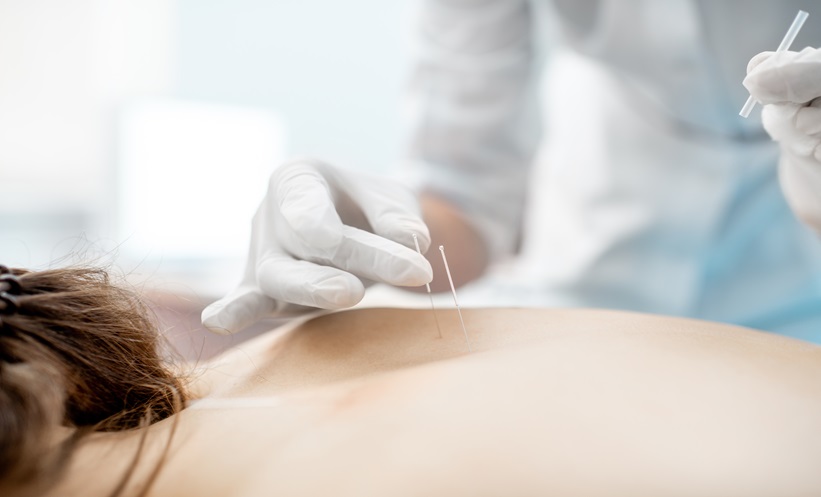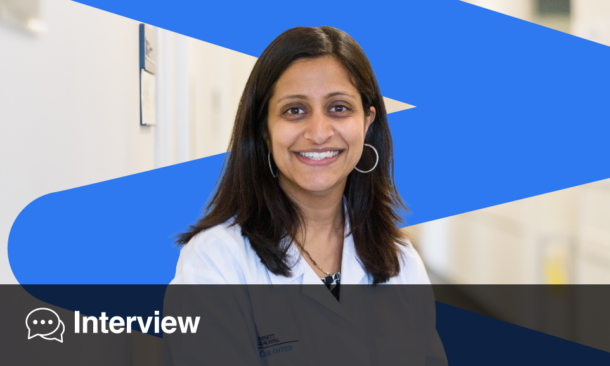Interviewees: Huub Schellekens,1 Paul Cornes,2 Martin Dreyling3
- Department of Pharmaceutics, Utrecht Institute for Pharmaceutical Sciences (UIPS), Utrecht University, Utrecht, Netherlands
- Comparative Outcomes Group, Bristol, UK
- Department of Medicine III, University Hospital, Ludwig Maximilian University (LMU), Munich, Germany
Disclosure: Prof Schellekens has declared no conflicts of interest. Dr Cornes has received advisory board fees from Astro Pharma, Mylan, and Pfizer/Hospira; and has received speaker’s fees and travel costs for meetings from Accord Healthcare, Astro Pharma, Biogen, the European Commission, the Global Academy of Health Sciences, Mylan, Napp, the National Cancer Society Malaysia, Pfizer/Hospira, and Sandoz. Prof Dreyling has received research support from Celgene, Janssen, Mundipharma, and Roche; has received speaker’s honoraria from Bayer, Celgene, Gilead, Janssen, and Roche; and has received Scientific Advisory Board fees from Acerta, Bayer, Celgene, Gilead, Janssen, Novartis, Roche, and Sandoz.
Support: The publication of this interview feature was supported and reviewed by Sandoz, a division of Novartis.
Disclaimer: The opinions expressed in this article belong solely to the three named interviewees.
Citation: EMJ Oncol. 2018;6[Suppl 2]:2-9. DOI/10.33590/emjoncol/10311071. https://doi.org/10.33590/emjoncol/10311071.
It is well documented that biosimilars have great potential to improve access to high-quality cancer care by offering less expensive biological drugs as a result of lower overall development costs than reference products. This has been shown to be the case in numerous examples, such as for the infliximab biosimilar in Norway; however, the overall impact of biosimilar use has been variable.1 In this supplement, three leading experts on biosimilars in cancer care give insights into a number of pertinent issues in the field, wherein there is currently substantial discussion and debate. These valuable insights were obtained from a series of interviews conducted between 19th September and 8th October 2018 by the European Medical Journal with Prof Huub Schellekens, Dr Paul Cornes, and Prof Martin Dreyling. The topics discussed include the extent to which biosimilars can improve access to quality treatment in the context of high cost cancer therapies and the ways in which the potential economic advantages that biosimilars offer can be applied back to health systems. Consideration is also given to the development of biosimilars and the ways in which this process can be simplified and made more cost-effective to result in less expensive products.
THE NEED FOR BIOSIMILARS
“I think the introduction of biosimilars is a massive step, probably the biggest step we have had in affordability of anti-cancer biologics,” stated Prof Schellekens. “Let’s take trastuzumab, which is on the essential medicine list of the World Health Organization [WHO]: for many countries, they can only afford the biosimilars and not the reference Herceptin.”
Dr Cornes concurred with this assessment: “Without biosimilars we are in big trouble,” he commented. “I was co-steer of the European School of Oncology’s working party on access to innovation and when that started our worries were whether we have enough innovative ideas and enough Phase I trial centres in Europe. You know, after about half an hour it was clear that Europe is full of innovation, but it is also full of clinical trial groups and it is short of money.” He then explained that innovation inevitably costs a lot due to the costs of running a large clinical trial.
Ensuring patients are able to benefit from medical innovations is a key challenge faced today. While innovative emerging treatments, such as CAR-T cell therapy and anti-CD20 monoclonal antibodies, offer new possibilities for oncologists and many cancer patients, the affordability factor make these difficult to access for many patients.
Costs of Cancer Drugs
There are a number of factors involved in the high cost of cancer care, and these were outlined by Dr Cornes. One significant influence is the high cost of drug development, leaving manufacturers with a large deficit before the drug reaches the market. Other major contributors are changing demographics and improvements in treating previous causes of ill-health and death, such as child birth, infections, and poor nutrition. Simply put, far more people are living with cancer than before. Another factor Dr Cornes credits is the move away from making chemical medicines to biologics, which are more difficult and hence more expensive to create. The final driver he listed was the increasing use of dual or even triple drug combinations ahead of monotherapy in the treatment of cancer patients.
Prof Dreyling agreed that the growth of combination therapy is a hugely important reason why the greater use of biosimilars is required, and one which especially resonates with doctors, whose primary focus is care for their patients rather than economic considerations. “One example that is very clear to most of us is that if we move onto combinations for a defined duration instead of monotherapy with indefinite duration, we cannot afford, let’s say, three very expensive compounds,” he stated. Therefore, the need for biosimilars is pressing.
“One example that is very clear to most of us is that if we move onto combinations for a defined duration instead of monotherapy with indefinite duration, we cannot afford, let’s say, three very expensive compounds.”
Dr Cornes added: “What I tell people is that if you look at the average ticket price of a new biologic, it is \$100,000; the last 10 to be launched were all >$10,000 a month. So if, as predicted by the influential millennial ‘The hallmarks of cancer’ paper by Hanahan and Weinberg,2 we are heading to triple-agent targeted therapy for cancer, you are basically looking at one-third of a million dollars a year to treat the world’s single greatest cause of life-years lost. You realise that is unaffordable. The way we are moving in cancer medicine is impossible to fulfil with the current costs of biologics, so we have reached a crunch point and something has to happen.”
Faced with increasing financial costs, Europe has recently seen a substantial growth in the number of biosimilar products on the market, although there is significant variation between countries.3 “There is pressure by the institutions and health insurance companies who pay the bill for the health system,” explained Prof Dreyling. “That huge pressure is taking place essentially all over the world, with very few exceptions, and the more organised the health system is, the quicker it is going to happen. What I have experienced during the last year is that biosimilars have quickly picked up on the market.”
Increasing Acceptance
As biosimilars have been shown to be just as safe and efficacious clinically as the reference product over time, the attitudes of stakeholders have become increasingly positive.4 In Europe, for example, the European Medicines Agency (EMA) has noted: “Over the last 10 years, the European Union (EU) monitoring system for safety concerns has not identified any relevant difference in the nature, severity, or frequency of adverse effects between biosimilars and their reference medicines.”5 Nevertheless, there remains caution regarding their use among oncologists. The next stage in increasing acceptance of biosimilars among oncologists, according to Dr Cornes, is to project awareness of their potential economic benefits.
“I think that the questions of a decade ago, such as are these drugs safe, can you extrapolate them, can you switch them, and can you trace them for pharmacovigilance, have all been satisfactorily answered. So, I think that the education now needs to shift to payers. I think the clinical question has been answered and the question is now: how do you actually use these drugs for their advantage? They are clinically similar, but economically dissimilar, so how do you gain that economic advantage?” he asked.
“From the point of view of the health system, we urgently need biosimilars, and there is no discussion about that because the health system runs into problems in all the first-world countries, independent of the system; therefore, yes, we need them,” elucidated Prof Dreyling. “The question is how to increase the acceptance, and that is a difficult question because the attitude is often ‘Well why should I take the copy if I can get the original?’. However, what we have learnt from biosimilars in the past is that they are exactly as sufficient and well-tolerated as the reference product. So, I think there is a learning curve, and us clinicians have to become used to the concept.”
“I think the clinical question has been answered and the question is now: how do you actually use these drugs for their advantage? They are clinically similar, but economically dissimilar, so how do you gain that economic advantage?”
While many clinicians talk about the risks involved in switching a patient to a biosimilar, Dr Cornes believes the risk should be reconceptualised. “A key paper from Vezér et al.6 showed us that of the monoclonal antibodies approved in Europe, 80% will have a manufacturing change once a year, and three out of four of those manufacturing changes will have a moderate-to-significant risk of creating a new drug structure, which could, therefore, have the potential to alter the quality, safety, or efficacy of the drugs. So, if you switch brands once a year for economic reasons it is about as risky as manufacturing change, and we consent for one and not the other,” he commented. “It is this logic, that the risk of switching is in proportion to the accepted risks of manufacturing process change, that lies behind the public support for switching brands as part of an annual tender process from several of Europe’s senior medicines regulators. This was shown in a 2017 paper by Kurki et al.7”
HEALTH SYSTEM BENEFITS
The economic benefits that may accrue from an increasing uptake of biosimilars could be used in a variety of ways depending on the type of health system and wealth of the respective country. Dr Cornes explained the differential impact of biosimilars across different markets. In high-access markets, the savings accrued as a result of biosimilars can be reinvested elsewhere. In middle-access markets, copayments can be dropped, facilitating new avenues of access. Finally, in markets where access was not affordable before, biosimilars will enable patients to have access to treatments. He noted that economic outcomes were increasingly being taken into account by decision-makers, commenting: “Instrumental, then, in the WHO’s decision to approve filgrastim, trastuzumab, and rituximab as essential drugs is that they meet not only the criteria for clinical usefulness, but they are economically sensible.”
Dr Cornes is well versed in the different ways in which these potential savings can be applied back to various health systems, particularly in the context of higher-income countries. In its simplest form, this is using the money saved to lower the cost of healthcare provision, an approach particularly useful for an insurance-based system, or allow hospitals to reinvest the savings as they see fit. One approach is the gain-share model that has been employed in the UK’s National Health Service. The aim of this is to split the financial savings between different stakeholders, improving quality and outcomes for patients while enhancing efficiency and value for money for the local health economy. This has been demonstrated to work well in the switch to infliximab biosimilars in inflammatory bowel disease patients at University Hospital Southampton, Southampton, UK.8 “They show that this model of gain-share, where they negotiated to get extra staff to drive the biosimilar uptake through education and consent, paid back on the investment about 10:1,” explained Dr Cornes.
DEVELOPMENT COSTS
To fully realise the potential economic benefits of biosimilars, the development costs need to be lowered to ensure that biosimilars can be sold at a much lower price than originals. Biosimilars are harder to make than generics because they consist of larger, more complex molecules, requiring significant time and money; biosimilars of monoclonal antibodies are particularly complicated to create.9
Dr Cornes summarised this issue: “The reference medicines increase their price year-on-year ahead of inflation, while generics and biosimilars decrease their price year-on-year, except at some point the cost of producing the generic (not just making it, but shipping it, regulating it, approving it, quality assurance), does not make it a good business.” Therefore, at some point, manufacturers drop out, eventually resulting in a lack of competition. He added: “Making biologics is a relatively inefficient thing. You have 30,000 L reactors and trickles of stuff eventually come out of them with a value per gram far higher than gold. So, the question is: could you innovate to increase the yield and make these productions much more cost-effective, thereby further increasing affordability for users while sustaining a profitable business model for producers?”
Clinical Trials for Biosimilar Assessment
There is significant discussion regarding how biosimilar production can be simplified to lower these costs. A major point being targeted is the streamlining of clinical trials. Biosimilar development differs from that of a reference product, with the main aim being to establish similarity with its originator. As such, there is significant scope to adapt the usual process used in the development of originators. In the EMA guidelines on biosimilars published in 2018, safety and efficacy data can be extrapolated from the totality of evidence experienced with the reference medicine because this “avoids unnecessary repetition of clinical trials already carried out with the reference medicine”.5 The U.S. Food and Drug Administration (FDA) has also recently announced they will be looking again at the regulations in place for biosimilars development to see if they can be simplified to mitigate the disappointing impact of these drugs in the USA so far.10
Analytical and preclinical studies are firstly used to assess biosimilarity with the reference product, and these are more sensitive and adequate in detecting any differences than clinical trials. Following this, the current standard is for at least one clinical study to compare pharmacokinetics of the reference drug and the biosimilar, and at least one sufficiently large randomised controlled trial to confirm clinical equivalence.
“In a Phase III trial of an original molecule, you know nothing, so you need to find and to define the indications, the right dosage, etc.; meanwhile, a biosimilarity trial is just a clinical trial to confirm what you have seen in terms of physical chemical characterisation and in biological characteristics, so they are two completely different things,” explained Prof Schellekens.
Is Phase III Necessary?
It is due to this that Prof Schellekens questions the long-term need for a Phase III clinical trial to assess biosimilarity. “I think we are now approaching biosimilars 2.0 regulations, and I think in many cases the clinical trial has no added value,” he said. “The problem is that the differences between a biosimilar and an original have become so small [that], nowadays, it is impossible to find these differences in a clinical trial; they are just not sensitive enough. So, I think for most products, the clinical trial requisite for biosimilarity will disappear.”
Adapting this model could ultimately lead to much lower drug prices, suggested Prof Schellekens: “We know that if you develop a biosimilar or any drug, clinical trials are 70% of your costs. So, if you do not need to do that, your development costs are relatively low, meaning that you do not need to set a really high price.”
“We know that if you develop a biosimilar or any drug, clinical trials are 70% of your costs. So, if you do not need to do that, your development costs are relatively low, meaning that you do not need to set a really high price.”
Rather than an expensive and long-running Phase III trial, Prof Schellekens argued that redesigned Phase I trials could be sufficient, in addition to the earlier preclinical analytical studies in most cases, taking into account all the evidence amassed for the reference product. “I think, if you look at biologics, the main side effects of the biologics are the pharmacodynamic effects; it is the effect of the drug itself. So, with a biosimilar, if you can convince me that they have the same potency, it will have the same side effect level,” he stated. “That is the reason I have said it is probably more logical to do a comparative potency with different doses, rather than doing a Phase III trial where you use the label dose, which is often in the plateau phase of the dose-response curve, and that’s the least sensitive part of dose-response regarding noticeable differences in potency. That is the reason I have said it is more logical to have a Phase I approach and also the reason I prefer pharmacodynamic trials, if possible. I am aware that with some biologics, you do not really have these pharmacodynamic markers and you have to look at the similarity in potency in another way, but my preference would be a dose-response and, if it is available, the right pharmacodynamic marker instead of a hard clinical endpoint.”
Preclinical Analytical Data
In recent years, preclinical analytical data have become enhanced in many ways, which can arguably further reduce the extent of the reliance traditionally placed on clinical trials in biosimilar development. “It is fair to say that, based on preclinical analytics, you can be quite sure that the biosimilar is exactly in the range of the reference product,” commented Prof Dreyling.
Prof Schellekens believes these improvements are something of a game-changer. “If you look at current methodology, it is sometimes 100-times more sensitive than the methods we had when the products were introduced. Take, for instance, erythropoietin, which has glyco-variants. Firstly, our guess was that there were 10–12 glyco-variants. With new technology, we now know there are >100,” he stated.
While Prof Dreyling also feels that Phase III trials can be revaluated regarding biosimilars, he does not believe they should be stopped altogether. In particular, he thinks they should be used to assess progression-free survival (PFS). “I think, yes, you need some Phase I trials in principle to prove first-in-man that there are no severe side effects, the drug’s efficacy, and so on, but you still need some orientation or confirmation of your preclinical expectations that this biosimilar is exactly as efficient as the reference product,” he commented. However, Prof Dreyling made it clear that Phase III trials for biosimilars do not need to be as in-depth as for reference products and do not need such long-term follow-up periods. “We already have a first level of confidence, and therefore long-term outcomes, like overall survival, are definitely not appropriate. But we need short-term outcomes, such as response rates and PFS or even surrogate markers for PFS. For example, in other diseases, minimal residual disease, which is an earlier indicator of PFS, has been accepted by the FDA to show the efficacy of the drug,” he added.
Prof Schellekens disagreed with Prof Dreyling’s view that PFS should be measured for biosimilar products. “The problem with PFS is that it is not a very good predictor of overall survival, and it is even more insensitive to pick up differences between the biosimilar and originator,” he argued.
Prof Dreyling did add, however, that as further biosimilar products are developed, Phase III trials will become less necessary. He stated: “I think you need them. You do not need the long-term readout and, for some of these, such as anti-CD20 antibodies, the first compounds are now on the market and we must be very delicate about what must be proven. However, if we are talking about the fifth, sixth, or seventh biosimilar, then we are probably more laid back, and, in this situation, I think a randomised Phase II study is absolutely fine because it gives you some orientation on response rates. The same has happened for some prior supportive agents, such as growth factors like GCSF [granulocyte-colony stimulating factor], erythropoietin, or others. However, for the time being I think we still need the Phase III studies.”
Dr Cornes believes that the main function of clinical trials for biosimilars should be to assess immunogenicity, which is of paramount importance for clinicians deciding whether to switch their patients to a particular biosimilar and for which preclinical analytical data alone are not sufficient. He suggests that this could be undertaken in redesigned Phase I trials. “You have got to have enough clinical patients to determine what the antidrug antibody levels are for that drug and whether they are neutralising or not. And the question is, can you do that in a smaller Phase I trial? We all know that antidrug antibodies can cause clinical problems. They can reduce the circulating concentration of the drug and stop it working. They can cause infusion reactions,” said Dr Cornes. He added: “You need a trial for immunogenicity because it is immunogenicity that is the issue with switching: if the drug is clinically comparable in bioactivity but is immunologically different, then the switch could trigger a problem.”
He also mentioned that savings could also be created through waiving bridging studies, dropping the need to prove similarity between European and American reference products. This is something that has been investigated recently by the FDA.11
“You need a trial for immunogenicity because it is immunogenicity that is the issue with switching: if the drug is clinically comparable in bioactivity but is immunologically different, then the switch could trigger a problem.”
There is also debate regarding the design and measurement of outcomes of Phase III biosimilar trials. In the view of Dr Cornes, this could include greater flexibility, with trials designed to be clinically rather than statistically significant. He questions whether statistical equivalence must be at 95% (p=0.05) in situations when good clinical results have been displayed. This is particularly the case in biosimilarity assessment, with a more flexible approach enabling approval of products showing good clinical results. Interestingly, such an approach has been used by the EMA recently. Dr Cornes gave the examples of the European approval of the trastuzumab biosimilars SB3 and ABP980, despite them not quite reaching the requisite level of equivalence; however, he made it clear that caution is needed regarding this simplification. “If America does not show that same flexibility then that will create two tiers of biosimilars between Europe and America,” he added.
Education for Clinicians
The adaptation or even ending of Phase III trials assessing biosimilarity depends to a large extent on greater knowledge and awareness on the part of clinicians and patients. “All the regulators tell you that the Phase III trial is the least useful component of their regulatory pathway, but you know doctors and patients like it. So, it may be that they will stay not because of regulatory requirement but because of marketing requirements,” said Dr Cornes.
Prof Schellekens acknowledged that as a medical doctor himself he had been trained that the double-blind, prospective clinical trial is the summit of clinical evidence for the activity of an intervention or a product. However, he explained that demonstrating biosimilarity was a different matter to demonstrating efficacy.
Educating clinicians that they need to look at data differently for biosimilars than for reference drugs is essential, particularly regarding the greater importance that preclinical analytical data have. Prof Schellekens believes this can best be achieved by approaching oncologists individually: “I believe in a system where you approach individual clinicians and give them the data and then try to convince them that there is nothing wrong with biosimilars and that they often have even a higher quality than the reference products.”
Prof Dreyling believes that personal experience and that of peers will normalise the use of biosimilars in clinical practice. He explained this in the context of lymphoma, a condition he has a particular interest in. “I am in the lymphoma world so there is a strong push for small molecules inhibiting the B cell receptor pathway,” he stated. “And it has been learnt that some of these tumours of the lymphomas develop some resistance, so we try to avoid that by combination. Then on top of that we would also like to use the best anti-CD20 antibody. But, at a certain point, we realise that it is just not feasible for financial reasons. And this is a typical scenario where you recognise that the biosimilar anti-CD20 antibody is as efficient as the reference one and if we are going for these sometimes quite expensive combinations for a certain time, then it is worthwhile to consider biosimilars.”
CONCLUSION
There is a range of ideas and theories about how to fully realise the economic potential of biosimilars outlined by Prof Schellekens, Dr Cornes, and Prof Dreyling. Much of these revolve around increasing awareness among clinicians and patients, including the efficacy and safety of biosimilars and the benefits that they can bring financially to healthcare systems, even if that is not their primary focus. Developmental costs are a major inhibitor to less expensive biosimilars and increasing the efficiency of the development and regulatory process is vital for this.
“I believe in a system where you approach individual clinicians and give them the data and then try to convince them that there is nothing wrong with biosimilars and that they often have even a higher quality than the reference products.”
Biographies
Prof Huub Schellekens Utrecht Institute for Pharmaceutical Sciences (UIPS), Netherlands
A medical microbiologist by training, Prof Schellekens now teaches medical biotechnology at Utrecht University in addition to holding a research position at the same institution. His research interests include biological products, immunogenicity, and biosimilars, the latter of which he has become an increasingly prominent figure in. He is the founder of the Utrecht Center of Excellence for affordable biosimilars and was previously a member of the Dutch Medicine Evaluation Board and National Expert of the EMA.
Dr Paul Cornes Comparative Outcomes Group, UK
Following training in medicine at Oxford University, Oxford, UK, Dr Cornes became a Consultant Oncologist at University Hospitals Bristol NHS Foundation Trust, Bristol, UK. He is a leading authority on biosimilars and has been part of the team that developed and presented evidence for the first successful American biosimilar to the Oncologic Drugs Advisory Committee of the FDA. He is also part of the steering group for the European School of Oncology Working Party on the Access to Innovation in Cancer Treatment.
Prof Martin Dreyling Ludwig Maximilian University (LMU), Germany
Prof Dreyling is an attending physician and head of the lymphoma section at the Department of Medicine III at the University Hospital of LMU, Munich. His clinical research focusses on the development and application of novel therapeutic approaches for patients, especially those with malignant lymphomas. Prof Dreyling is also a founding board member of the German Lymphoma Alliance (GLA) and the German Low-Grade Lymphoma Study Group (GLSG), in addition to being a faculty member of the European Society for Medical Oncology (ESMO) and the European Hematology Association (EHA).








